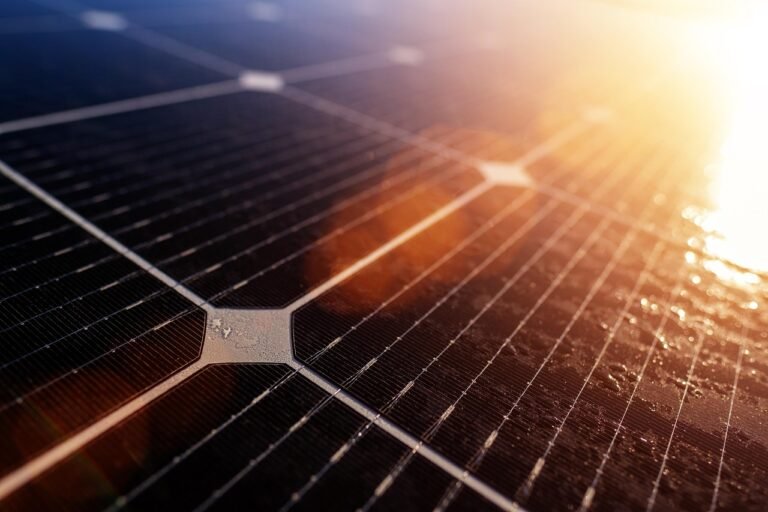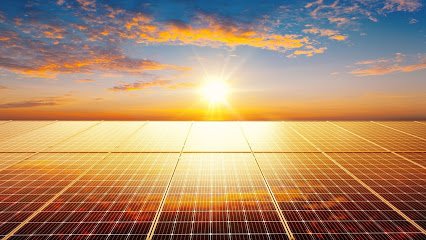Understanding Solar Energy Production
Solar energy is harnessed primarily through photovoltaic (PV) cells, which are found in solar panels. These cells convert sunlight into electricity by utilizing the photovoltaic effect. When sunlight hits the surface of the PV cells, it excites electrons, creating an electric current. This process is most efficient when the intensity of sunlight is at its peak, typically during midday. In regions such as Australia, where abundant sunshine is readily available, solar panels are particularly advantageous, providing a significant source of clean energy.
There are several types of solar panels available on the market, each with varying levels of efficiency. The most common types are monocrystalline, polycrystalline, and thin-film solar panels. Monocrystalline panels are recognized for their high efficiency and longevity; they tend to perform better in low-light conditions compared to their polycrystalline counterparts. Additionally, thin-film panels are often less efficient but are lightweight and flexible, offering versatile installation options.
-Explore Solar Energy Companies in Australia-
It is important to understand that the effectiveness of solar energy production hinges on several factors, including the angle of installation, shading from surrounding structures, and atmospheric conditions. For instance, on cloudy days, solar panels can still generate electricity, albeit at reduced efficiency. Understanding how do solar panels work during these variations in light exposure is crucial for optimizing their performance. Nonetheless, solar panels do not produce electricity at night because they rely solely on sunlight to generate power. This characteristic makes solar energy production directly linked to daylight hours, leading to the common question: do solar panels work at night? Recognizing this limitation is essential for planning energy consumption and storage solutions effectively.
The Role of Battery Storage Systems
In the realm of solar energy, one of the pivotal technologies that enhance efficiency and practicality is battery storage systems. These systems are designed to store excess energy generated by solar panels during the day, which is especially crucial for harnessing solar energy at night when there is no sunlight. This capability allows users to utilize solar energy even after the sun has set, making it a vital component for those wondering how do solar panels work at night?
The most commonly used battery technologies in solar panel installations include lithium-ion, lead-acid, and flow batteries. Lithium-ion batteries are highly regarded for their high energy density, longer lifespan, and lower maintenance requirements. However, they can be relatively expensive when compared with other options. On the other hand, lead-acid batteries are more affordable; they have been traditionally used in solar setups but come with shorter life spans and require more extensive maintenance. Flow batteries are gaining attention for their durability and scalability, making them an emerging choice for larger installations.
When considering a battery storage system for solar panels in Australia, several factors should be taken into account. First, the size and capacity of the battery are essential, as they must be sufficient to store energy generated during the day for use at night. Additionally, the efficiency of the battery, measured by how much stored energy is retrievable, influences overall effectiveness. Depth of discharge and cycle life are also crucial metrics, as they determine the longevity and reliability of the battery system. As solar panels become more widespread in Australia, understanding battery systems and their role in optimizing solar energy on cloudy days is essential for maximizing benefits.
-Explore Solar Energy Companies in Australia-
In conclusion, battery storage systems play a crucial role in the functionality of solar panels, particularly in enabling energy access at night. Selecting an appropriate battery technology is essential for optimizing solar energy utilization and ensuring that energy needs are met efficiently.
Alternative Solutions for Nighttime Energy Needs
During nighttime, solar panels in Australia and elsewhere become inactive, resulting in the need for alternative energy solutions to meet household demands. As solar energy does not generate electricity once the sun sets, homeowners must consider various options to ensure continuous energy supply, particularly during peak usage hours at night. One such solution is the reliance on grid power. Most solar panel systems are connected to the grid, allowing homeowners to draw electricity when their solar panels are not producing energy. This is particularly beneficial during high-demand periods or when the energy stored in batteries is inadequate.
Another viable alternative is the integration of wind energy. Wind power can complement solar energy systems effectively, particularly in regions where wind patterns are favorable during the night. By installing a small wind turbine alongside solar panels, homeowners can harness wind energy, thus generating electricity and reducing reliance on the grid after dark.
Hybrid systems, which combine multiple renewable energy sources, represent another promising approach. By integrating solar, wind, and possibly even hydroelectric energy, homeowners can create a more resilient energy system that capitalizes on the strengths of each source. These systems can significantly enhance energy reliability during grid outages or unfavorable weather conditions when solar energy on cloudy days is insufficient.
Moreover, effective energy consumption management strategies should be adopted to optimize solar power usage. Homeowners can schedule high-energy tasks, such as running dishwashers or washing machines, during daylight hours when solar panels are producing energy. By being mindful of energy consumption and implementing smart home technologies, individuals can maximize their use of solar energy and minimize the need for external energy sources at night.
In conclusion, while solar panels cannot operate at night, various alternative solutions such as grid power, wind energy, hybrid systems, and effective energy management strategies can help meet nighttime energy needs effectively.
Future Innovations in Solar Technology
The solar energy sector is continuously evolving, with research and development focusing on innovative technologies that may enable solar panels to function more effectively during the nighttime. Currently, traditional solar panels primarily generate electricity during daylight hours when sunlight is available. However, advancements in solar technology could pave the way for maximizing solar energy utilization, even after sunset.
One promising avenue is the advancement of solar thermal systems. These systems capture and store heat from the sun, which can then be used to power turbines, generating electricity during non-sunny hours. By improving these storage techniques, it may be possible to create systems capable of sustaining energy supply during the night, thus enhancing the overall efficiency of solar panels in Australia. Researchers are experimenting with high-heat capacity materials that can retain thermal energy for extended periods, providing a potential solution for maintaining energy output at night.
-Explore Solar Energy Companies in Australia-
Moreover, the development of new photovoltaic materials could significantly impact the efficiency of solar energy systems. Innovations such as perovskite solar cells, known for their impressive light absorption capabilities, may offer solutions for capturing and converting not just visible light but also other wavelengths of electromagnetic radiation. Excitingly, some experimental technologies are exploring the concept of converting infrared radiation emitted from the Earth during the night back into usable electricity, directly answering the question: how do solar panels work at night?
Additionally, advancements in battery technologies are advancing the potential for solar energy at night. Improved energy storage solutions, such as flow batteries and solid-state batteries, promise to store greater amounts of energy generated during the day for later use. As these innovations mature, the dynamics of energy consumption will change, providing users with the opportunity to utilize solar energy even when sunlight is absent, thus revolutionizing the effectiveness of solar panels in achieving energy independence.
In conclusion, the future of solar energy technology holds considerable promise. With continued research into solar thermal systems, advanced photovoltaic materials, and improved battery storage, the possibility of solar panels working effectively at night becomes a tangible prospect. These innovations will not only enhance energy efficiency but could also significantly contribute to a more sustainable energy future.



